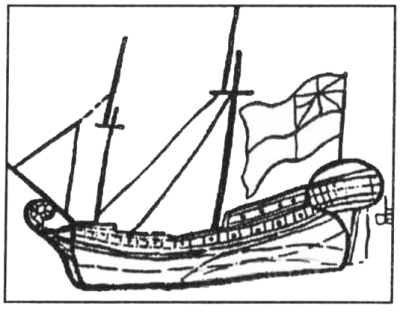French prize
One of the first Jersey vessels to set out in search of enemy targets was the Lively, formerly a French vessel built over 20 years earlier and probably taken as a prize during the Seven Years War.
It might have been thought that after their experience with this ship, Patriarche and Co, the owners, would have been reluctant to use the name again, because it would not be long before she was retaken by the French, as would two subsequent company vessels to bear the name.
John Kerby
The first Lively, a 118-ton brig armed with 16 cannons, and with a crew of 75, was captained by John Kerby, the second son of the wonderfully named Farthingaudo Kerby, a garrison soldier and the son of another garrison soldier also called Farthingaudo.
Captain John Kerby was born on 3 January 1737. Although there are suggestions that he married Francoise Balcam in 1766 and had three children, it seems more likely that her husband was the Captain’s first cousin and that he did not marry until 1787, four years after he was released from a French prison.
John Kerby had been captain of the London Packet between 1754 and 1765 and the Corbet in 1776 before he turned to privateering
His Lively was captured on 4 August 1778 by three French vessels; two frigates, the Courageuse and Herpsichore and a corvette, the Rossignol.
It was an unequal battle. Although the crew of the Lively threw eight of their cannons overboard to try to increase speed, the Courageuse simply put up extra sails and soon caught up. Captain Kerby had no choice but to surrender.
The survivors of the engagement were to spend the next five years imprisoned in the Tour de la Lanterne at La Rochelle, until the Treaty of Versailles in 1783 allowed their release.
Four years later Captain Kerby married Ann Mauger, possibly a relative of Charles Mauger, who was his Lieutenant on the Lively. They had one daughter and lived at Rue de Pied de la Montagne in St Helier.
Capt Kerby would go on to command the Charlotte, before becoming part owner, with John Dolbel, of the privateer Dolphin, which took five prizes between 1793 and 1794 under the command of Captain Francis Journeaux.
John Kerby died on 29 November 1807.
The second Patriarch and Co Lively was taken by the French in 1784 and the third, launched in 1790, was taken in 1805 while under the command of Captain Richard Quiller.


